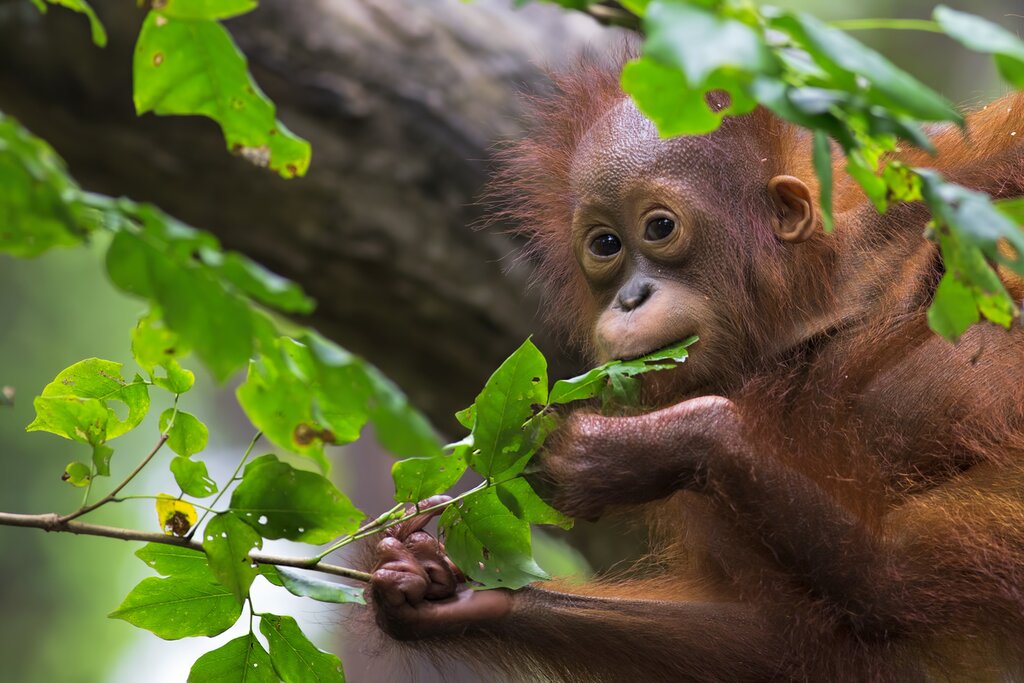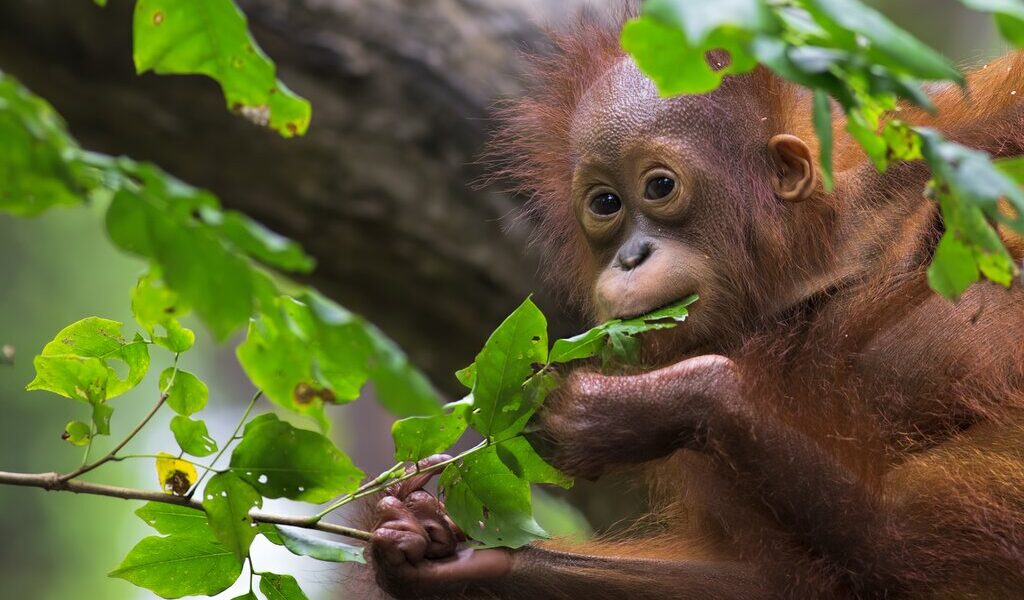
March is an ideal time to visit Malaysia if you want to focus on wildlife and nature. The start of the dry season in the east and Borneo means travelers will be spoiled for choice. Spot orangutans in Sarawak and Sabah, climb Mt. Kinabalu, hike in the jungles, and encounter a range of other wildlife throughout the country. Read on to find out more about travel to Malaysia in March.
## Weather in Malaysia during March
It is often remarked that the arrival of spring in Malaysia occurs in the month of March. While it’s not entirely accurate to apply the concept of distinct seasons to a tropical nation where significant temperature fluctuations are not the norm, it is true that the weather generally exhibits a tendency to become warmer during this period. The temperature variations across the country are relatively subtle, typically ranging from a comfortable 71°F (22°C) to a balmy 91°F (33°C) throughout the entire year. However, it’s important to note that regions situated at higher elevations tend to experience cooler temperatures. The eastern regions of the country, which are typically drenched with rainfall during the “winter” months (December to February), experience a gradual drying out starting in March. This includes areas such as Malaysian Borneo, with its lush rainforests and diverse ecosystems, and the idyllic Perhentian Islands, known for their pristine beaches and turquoise waters. Conversely, the western regions, including the bustling capital city of Kuala Lumpur, tend to receive a higher amount of rainfall during this time. The increased rainfall in Kuala Lumpur can lead to short, intense downpours, often in the afternoon.
## Crowds and Costs in March
March represents a “shoulder season” for travel to Malaysia, a period that sits between the peak tourist influx and the off-season lull. Popular destinations in western Malaysia, including the vibrant metropolis of Kuala Lumpur, the cultural hub of Penang with its delicious street food, the idyllic island paradise of Langkawi, and the historical city of Melaka, generally experience a decrease in tourist numbers compared to the preceding months of January and February. However, the weather conditions in these areas usually remain favorable for travel and exploration, offering pleasant days for sightseeing and outdoor activities. In contrast, the eastern regions of the country witness an increase in activity as the rainy season subsides. This makes it possible to engage in wildlife-watching expeditions in the dense forests and national parks. As a result of increased demand, prices in these eastern areas tend to be higher than in the preceding months, but the range of open businesses and hotels is significantly greater, providing more options for accommodation and dining.
It is crucial to remain mindful of the fact that Malaysian schools typically have vacation periods in late March. This can significantly affect the availability of accommodations and services in popular beach resort areas, as Malaysian families often choose to travel to these destinations during school breaks. Booking in advance is highly recommended, especially in places like Langkawi and the Perhentian Islands.
## Prime Destinations to Explore
March is an exceptional month for wildlife enthusiasts and birdwatchers visiting Malaysia. Opportunities abound to observe the diverse fauna and avian species in both Sarawak and Sabah (on Malaysian Borneo), as well as in Peninsula Malaysia. For those arriving at Kuala Lumpur (“KL”) and lacking the opportunity to venture to Borneo, a worthwhile alternative is Taman Negara, a national park situated northeast of KL. This ancient rainforest, estimated to be around 130 million years old, boasts impressive canopy walkways, captivating caving adventures, and a wide array of hiking trails. For intrepid travelers seeking a more challenging experience, consider embarking on a climb of Mt. Tahan (7,175 ft / 2,187 m), the highest peak in Peninsular Malaysia.
Within Taman Negara, wildlife enthusiasts can strategically position themselves within a network of thoughtfully constructed hides on stilts to observe a diverse array of wildlife, including various monkey species, the elusive Malayan tapirs, majestic elephants, and potentially even the critically endangered Sumatran rhinos, a true testament to the region’s rich biodiversity. The sounds of the jungle come alive in March.
Many travelers are drawn to Malaysia for the allure of its pristine beaches, and March is an ideal time to explore the stunning Perhentian Islands, located off the northeast coast of Peninsula Malaysia. These islands attract a considerable number of tourists, yet they retain a sense of unspoiled charm due to their relatively limited infrastructure, intermittent internet access, and the absence of ATMs. This creates a tranquil atmosphere perfect for a rejuvenating escape. Diving and snorkeling are popular activities here, allowing visitors to immerse themselves in the vibrant underwater world. Alternatively, one can simply relax on the powdery white-sand beaches, swim in the crystal-clear turquoise waters, and soak up the sun’s warmth. Imagine the gentle breeze, the sound of the waves, and the warmth of the sun on your skin.
## Activities to Indulge In
The Malaysian regions of Borneo Island, encompassing the states of Sarawak and Sabah, present an even wider range of wildlife-focused and nature-based activities. Borneo holds the distinction of being one of only two places on Earth where it is possible to observe orangutans in their natural habitat (the other being neighboring Sumatra, which is part of Indonesia). There are promising opportunities to spot these magnificent creatures at the Semenggoh Nature Reserve, situated near Kuching, and at the renowned Sepilok Orangutan Rehabilitation Centre in East Sabah. Another way to potentially encounter orangutans, along with proboscis monkeys, crocodiles, pythons, and elephants, is by embarking on a river cruise along the Kinabatangan River in northeastern Sabah.
For those venturing to Borneo, a potential highlight of their trip could be an ascent of Mt. Kinabalu, the tallest mountain in Malaysia, soaring to a height of 13,435 feet (4,094 m). While climbing Mt. Kinabalu does not require specialized technical equipment or advanced mountaineering skills, the two-day climb is physically demanding and involves some rope-assisted scrambling sections as you approach the summit. The panoramic views from the summit are truly awe-inspiring on clear days. You can also see the remarkable variety of flora and fauna within the boundaries of Kinabalu National Park.
For a less strenuous alternative to mountain climbing, consider opting for a jungle hike to embrace the natural surroundings. Some of Borneo’s national parks offer trails that can be explored independently, while others necessitate the guidance of a local expert. A visit to Bako National Park in Sarawak provides opportunities to observe the silver leaf and macaque monkeys, monitor lizards, and kingfishers.
## Events in March
**Easter**, (especially in) Melaka. Malaysia, as a multicultural society, has a Christian population accounting for approximately 9% of the total. Melaka stands out as the prime location to experience a Malaysian Easter celebration, complete with candlelit processions making their way to churches on Good Friday. Easter can occur either in late March or in early to mid-April.
**Ramadan**, observed nationwide. With over 60% of Malaysians practicing Islam, the holy month of Ramadan sometimes overlaps with a portion of March. During this sacred month, devout Muslims abstain from food and drink during daylight hours. While this practice may have a slight impact on restaurant operating hours in certain areas, and it is essential to demonstrate respect for locals who are observing the fast, it can be a unique opportunity to immerse yourself in the local culture during the evenings. Many night markets and special events are held during Ramadan, offering a glimpse into the spirit of community and celebration.
**(Word Count: 1188)**
B-1542

